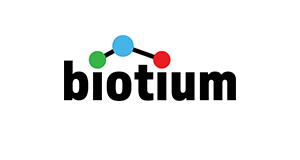CD20 / MS4A1 (B-Cell Marker)(L26), CF740 conjugate, 0.1mg/mL
CD20 / MS4A1 (B-Cell Marker)(L26), CF740 conjugate, 0.1mg/mL
SKU
BTMBNC740766-100
Packaging Unit
100 uL
Manufacturer
Biotium
Availability:
loading...
Price is loading...
Description: This antibody recognizes a protein of 30-33 kDa, which is identified as CD20. Its epitope is located in the cytoplasmic domain of CD20 and was, therefore, ascribed as CD20cy in the 5th Workshop. CD20 is a non-Ig differentiation antigen of B-cells and its expression is restricted to normal and neoplastic B-cells, being absent from all other leukocytes and tissues. CD20 is expressed by pre B-cells and persists during all stages of B-cell maturation but is lost upon terminal differentiation into plasma cells. This MAb can be used for immunophenotyping of leukemia and malignant cells, B lymphocyte detection in peripheral blood and B cell localization in tissues. It reacts with the majority of B-cells present in peripheral blood and lymphoid tissues and their derived lymphomas. In lymphoid tissue, germinal center blasts and B-immunoblasts are particularly reactive. It is a reliable antibody for ascribing a B-cell phenotype in known lymphoid tissues. Rarely, CD20-positive T-cell lymphomas have been reported. Reactivity has also been noted with Reed-Sternberg cells in cases of Hodgkin s disease, particularly of lymphocyte predominant type.
Product origin: Animal - Mus musculus (mouse), Bos taurus (bovine)
Conjugate: CF740
Concentration: 0.1 mg/mL
Storage buffer: PBS, 0.1% rBSA, 0.05% azide
Clone: L26
Immunogen: Human tonsil B cells
Antibody Reactivity: CD20/MS4A1
Entrez Gene ID: 931
Z-Antibody Applications: Flow (verified)/IF (verified)/IHC, FFPE (verified)/WB (verified)
Verified AB Applications: Flow (verified)/IF (verified)/IHC (FFPE) (verified)/WB (verified)
Antibody Application Notes: Higher concentration may be required for direct detection using primary antibody conjugates than for indirect detection with secondary antibody/Immunofluorescence: 1-2 ug/mL/Immunohistochemistry (formalin-fixed): 0.5-1 ug/mL for 30 minutes at RT/Western blot: 1-2 ug/mL/Flow cytometry: 0.5-1 ug/million cells/Staining of formalin-fixed tissues requires boiling tissue sections in 10 mM citrate buffer, pH 6.0, for 10-20 minutes followed by cooling at RT for 20 minutes/Optimal dilution for a specific application should be determined by user
Product origin: Animal - Mus musculus (mouse), Bos taurus (bovine)
Conjugate: CF740
Concentration: 0.1 mg/mL
Storage buffer: PBS, 0.1% rBSA, 0.05% azide
Clone: L26
Immunogen: Human tonsil B cells
Antibody Reactivity: CD20/MS4A1
Entrez Gene ID: 931
Z-Antibody Applications: Flow (verified)/IF (verified)/IHC, FFPE (verified)/WB (verified)
Verified AB Applications: Flow (verified)/IF (verified)/IHC (FFPE) (verified)/WB (verified)
Antibody Application Notes: Higher concentration may be required for direct detection using primary antibody conjugates than for indirect detection with secondary antibody/Immunofluorescence: 1-2 ug/mL/Immunohistochemistry (formalin-fixed): 0.5-1 ug/mL for 30 minutes at RT/Western blot: 1-2 ug/mL/Flow cytometry: 0.5-1 ug/million cells/Staining of formalin-fixed tissues requires boiling tissue sections in 10 mM citrate buffer, pH 6.0, for 10-20 minutes followed by cooling at RT for 20 minutes/Optimal dilution for a specific application should be determined by user
| SKU | BTMBNC740766-100 |
|---|---|
| Manufacturer | Biotium |
| Manufacturer SKU | BNC740766-100 |
| Package Unit | 100 uL |
| Quantity Unit | STK |
| Reactivity | Human |
| Clonality | Monoclonal |
| Application | Immunofluorescence, Western Blotting, Flow Cytometry, Immunohistochemistry |
| Isotype | IgG2a kappa |
| Host | Mouse |
| Conjugate | Conjugated, CF740 |
| Product information (PDF) | Download |
| MSDS (PDF) | Download |

 Deutsch
Deutsch







